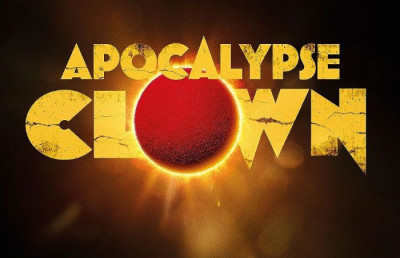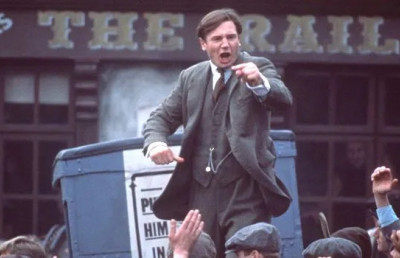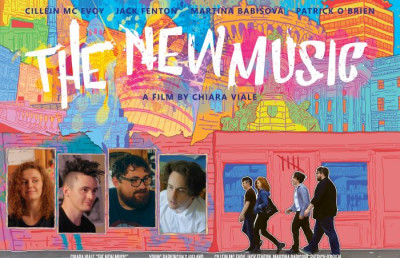The Documentary Genre and Healing Ireland’s Transgenerational Trauma
The country of Ireland's history is a tumultuous one of cyclical oppression, revolution, and transformation. With this cycle comes traumatization and re-traumatization of the Irish people. This pain often has nowhere to go and is passed down from generation to generation. With the introduction of the documentary film form in the early 20th century, Irish filmmakers were given the tools to document and preserve their country's history as it was happening. As camera and video technology evolved, so did the Irish documentary form and its filmmakers' goals. In the early decades of the 1900s, documentary was a young genre, and only recently has much of this period's work become restored and digitized to give Ireland an anchor for its trauma. In the mid-20th century, documentary was used as a revolutionist tool, and today is used to bring the opposing groups from this period together. Documentary today has been a call to action for 21st-century generations in Ireland and can be used as a tool to dissect the nation's collective memory and traumas and offer a starting point for personal and collective healing. Documentary films and videos made by Irish filmmakers shed light on the hidden transgenerational trauma of an entire country, while also teaching the descendants of those traumatized how to heal and persevere.
After the invention of film technology in the late 19th century, humanity's capability for memory expanded to never-before-seen levels. Within the first few decades of the 20th century, two world wars ravaged the planet, globalization and industry spiked, and multiple civil revolutions raged on. In Ireland, the first half of the 1900s featured the 1916 Easter Rising, the Irish War of Independence, and the Irish Civil War. All of this violence was very traumatic for the population of this country, and for the first time ever, this type of trauma was caught on film. These were extremely important events in the metamorphosis of Ireland into the country's identity today. However, over the course of the last century, all of the film documentation was hidden away and at risk of being forgotten. The memory of these events was dependent on the collective memory of those who lived in these times, and their ability to pass down stories of their experiences orally. This post-memory – "the collective memories transmitted to a second generation of people who have not experienced the actual events but who have often adopted the traumatic tensions of the first generation" – oriented the lives of generations to come around their elders' haunted pasts (Kortti 101). It is these tensions that could have led to further conflicts and violence, further contributing to Ireland's historical culture. As Rosie Burrows and Brid Keenan discuss in "Bearing Witness: Supporting Parents and Children in the Transition to Peace," "unresolved and intergenerational trauma can freeze people and groups in the past, and make transformation to more just, equal and peaceful society less possible" (Burrows & Keenan 121). The Troubles, which took place later on in the second half of the 20th century, prove this point possible. The Irish people experienced violence and unrest and this cemented how they interacted with one another. Consider the common phrase, "hurt people hurt people."
In the 1980s, with the introduction of cheap digital video technology and the boom of televised programs, a broad public interest in history started to bloom. This led to dramatizations of history in television programs, with history being treated as "infotainment" and facts used as recommendations and not the rule. These fictionalized interpretations of historical events were popular and made a nation's darker past more bearable, altering Ireland's media memory – "the systematic exploration of collective pasts that are narrated by the media through the use of media" (Kortti 94). This media memory could have shifted the historical culture of Ireland, now with so many who experienced these events having passed on. The collective memory of a nation now had no first-hand witnesses but still carried the pain and trauma of the deceased into the future. Thankfully, in recent years, multiple people and organizations have dedicated their time to recovering, restoring, and digitizing these reels to be cataloged online. Now, for the first time in decades, first-hand accounts of the conflicts in Ireland from the early 1900s are available to an entirely new generation. The Irish Independence Film Collection, for example, is a database of hundreds of recovered newsreel clips from 1900 – 1930. These clips were all hidden away in attics and locked away by non-Irish agencies. By reclaiming these works and making them readily available to the Irish public, the people of this country can reflect on the transgenerational trauma – the manifestation of the post-memory from their ancestors' traumas as their own – and begin to heal. Other organizations have taken it even one step further than the Irish Independence Film Collection and assembled such clips into a linear chronological, semi-narrative piece of work. For example, The Irish Revolution in Colour (Dwan, 2020) is a two-episode miniseries depicting the Irish social and political landscape from 1908 to 1923 using digitized and colorized primary source material. Using only this archival material, the filmmakers were able to create a digital world that the Irish public can experience and use to begin to understand their country's past, and how their culture has evolved the way it has. While some of the clips depict military events and violence, many simply depict the everyday lives of Irish civilians. The grainy black-and-white images are the faces of their grandparents and their great-grandparents. By addressing the time period head-on, only then can healing begin.
Three decades after the events showcased in The Irish Revolution in Color (Dwan, 2020), Ireland's economy and national identity was in shambles. Many Irish men went to work in Britain because of the lack of jobs in their home country. Working in manual labor and other less-desirable jobs, these men were viewed as second-class citizens. Not British enough to be respected, but no longer solely Irish after leaving their home country, personal identity was a struggle. One man, a product of this migration, was named Phillip Donnellan. Born in Britain to an Irish father and British mother, Donnellan grew up to work in broadcast television when it was still an emerging medium in the 1950s. Working for the BBC, he struggled to create content for a traditionalist, pro-Britain company that often erased Irish culture and influence in its pieces. Donnellan, proud of his Irish genealogy, found himself attempting "to make films that offered an alternative version of the past by bringing it into creative collision with the present in ways that those in power found disturbing" (Pettitt 352). In his 1965 documentary The Irishman: An Impression of Exile (Donnellan, 1965), Phillip Donnellan portrays this identity crisis as a population in exile. Filming the men laboring in Britain, he created a documentary about the Irish population that his father belonged to, a collection of second-class citizens. In the documentary, a British man is interviewed and calls the Irish workers "savage" and "nomadic" for working without shirts and hopping from job to job. This contrasted with the beautiful Irish folk songs that back the images as well as the emotional testimonies from some of these workers paints an intimate portrait of the Irish experience in exile. The manual labor being done is viewed in the film as imperative to the functionality of a nation, the Irish being the backbone of a country that has historically and presently treated Ireland as lesser than. BBC refused to air the documentary and attempted to have it wiped away completely for its poor depiction of Britain and its people. The documentary, however, should be celebrated not only for its aesthetic images but also as a therapeutic process. Donnellan, through the production of The Irishman: An Impression of Exile (Donnellan, 1965) was able to work through the transgenerational traumas of his father and the rest of his father's generation. The piece acts as a metaphorical discussion between father and son, and while difficult to find on the internet, the emotional impact it has on the Irish people can still be felt today.
A few years after the Irish experience that was expertly immortalized in The Irishman: An Impression of Exile (Donnellan, 1965) came the Troubles, a period of religious violence and unrest from 1969 – 1998 between the Catholic and Protestant populations in Ireland. Over 3,600 were killed, 40,000 injured, and many more were displaced and traumatized by the events around them. With the Good Friday Agreement of 1998 having occurred less than 30 years ago, most of the generation that endured this time period is still alive and passing on their mental and emotional hardships to their children. These people had taken on their parent's trauma from the Irish Revolution era and then had to endure violence themselves from the IRA – the Irish Republican Army – and UDR – the Ulster Defense Regiment. Many have refused to discuss the events with each other, and there is still tension between the opposing groups to this day. This lack of honest communication is something that films like Cahal McLaughlin's Unheard Voices: Stories from the Troubles (McLaughlin, 2010) attempt to combat. Psychological theory suggests that "in order for traumatic memories to be psychologically processed, they must be 're-narrativised' in a form that reduces their intrusion into conscious thought" (Dyer 134). Storytelling is seen as one of these forms. By having six survivors of the Troubles tell their stories on film, they can orally process their traumas and begin to heal. This was one of McLaughlin's goals. His other was to place stories from all sides of the conflict next to each other to represent a complete Irish narrative of the Troubles and not place one side's opinion over another. Members of each side still tend to segregate themselves from the 'other'. By opening up a dialogue about how both sides suffered, Unheard Voices attempts to get survivors to empathize with the other and create a "shared pain or collectivity" (Dyer 141). The film portrays each narrator with little cinematic aestheticizing or a musical score. By stripping down the film to its most basic features, audiences can view the documentary on a bare, honest level, and connect with those who are possibly sharing their traumas for the first time. "Audiovisual storytelling" can be a way for participants to recreate and understand their world as they experience it instead of the version represented in mass media (Dyer 141). In this way, the film combats the skewed media memory and adds to Ireland's collective memory and historical culture with honest, first-hand accounts. This film and others like it offer the tools to help break down the strong bonds of transgenerational trauma in Ireland.
As the emotional barriers of past generations begin to crumble, the newer generations of the late 1990s and early 21st century are beginning to address their own intergenerational trauma – the emotional and mental health responses to experiencing transgenerational trauma – and make concrete changes to Ireland's social and political norms in hopes of a healthier, healed nation. This couldn't be done today without trailblazers such as Sinead O'Connor. Kathryn Ferguson, a contemporary Irish filmmaker, focuses her lens on this fact in her documentary Nothing Compares (Ferguson, 2022), which dissects O'Connor's life of music and activism up until her ousting from the pop mainstream at the end of the 20th century. The documentary begins detailing Sinead O'Connor's harsh upbringing by an abusive mother and eventual institutionalization at one of the infamous Magdalen Laundries in Ireland. The film analyzes how her mother's religious trauma and upbringing in a tumultuous Ireland led to her further traumatizing her daughter through intergenerational trauma. O'Connor used writing music as a therapeutic outlet for her emotions and abuse, and quickly connected with the people of Ireland and the world. Her rapid rise to stardom was aided more by her unconventional aesthetic – a shaved head and androgynous attire. Despite being seen as a "rebel" in conservative Ireland, her music connected with many and was an outlet for the younger people to process their hurt. Seeing her opportunity as a public figure, O'Connor began using her voice to protest global injustices, including racial and queer rights, especially when it came to the Catholic Church. Her career culminated in her SNL performance in 1992, where she sang an acapella version of "War" by Bob Dylan and ripped up an image of Pope John Paul II to protest the abuse of children by Catholic priests. This enraged the global public and she swiftly fell from her celebrity pedestal. Today she is seen as a form of martyr, but at the time, her extremely religious nation turned their backs on her.
The result of Sinead O'Connor's activism would not be seen for some time, but her work was a catalyst for transformation within the Irish youth. Younger generations became more vocal about the country's ban. On gay marriage and abortion, and protests occurred for decades until both were eventually legalized in 2015 and 2018 respectively. These changes were the product of work done by an entire nation's population, and Nothing Compares (Ferguson, 2022) stylistically demonstrates that. The film is made up entirely of archival images and video. While we hear the voices of Sinead O'Connor and other narrators, none of their faces are shown in the present day. In this way, they represent the voices of everyone in Ireland. While the documentary is technically a biography of Sinead O'Connor, it acts as a call to action from Ireland to itself. The montage of photos and news clips in a fast-paced manner is charged with emotional tension, like an animal trying to be free from a cage. Culminating in a montage of clips from present-day Ireland and the changes that have been made, the ending of the film is a release of this tension, with almost a sense of euphoria. While Ireland still has lots of work to do, this documentary proves that addressing sources of transgenerational trauma can break the cycle of violence from one generation to the next, and good progress can be made.
The bonds of transgenerational trauma in Ireland have had centuries to form, but despite their strength, documentary film acts as a bond breaker through traditional documentary aesthetics and first-person accounts and footage. The availability of digitized early 19th century newsreels acts as an anchor point for the Irish people and their historical culture at risk of disappearing. Mid-century confessions address the intergenerational trauma affecting the mental health of the Irish elderly and their offspring. Today's documentaries contextualize the trauma and pain within a contemporary setting, and act as a call to action to break the transgenerational trauma cycle. Ireland is a country full of proud Irish people, and documentaries offer the chance for these people to open up and connect, offering hope for a brighter Ireland tomorrow.
Works Cited
Burrows, R., & Keenan, B. (2004). Bearing witness: Supporting parents and children in the transition to peace. Child Care in Practice, 10(2), 107–125. https://doi.org/10.1080/13575270410001693349
Cahal McLaughlin. (2010). Unheard Voices: Stories from the Troubles. Retrieved 2024, from https://cahalmclaughlin.com/portfolio-item/unheard-voices/
Dyer, J. M. (2019). The risks and benefits of collaborative documentary filmmaking in post-conflict Northern Ireland: An analysis of participant and audience responses to telling and hearing stories from the troubles. Media Practice and Education, 21(2), 133–147. https://doi.org/10.1080/25741136.2019.1664010
The Irish Independence Film Collection. IFI Archive Player. (2021, September 1). https://ifiarchiveplayer.ie/independencefilms/#smartpost-page-1
The Irishman: An Impression of Exile. (2020). YouTube. Retrieved January 6, 2024, from https://youtu.be/M0mUgIsmnDA?si=Mxat5E5KDzNR-saB
Kortti, J. (2022). War, Transgenerational memory and documentary film: Mediated and institutional memory in historical culture. Rethinking History, 26(1), 93–112. https://doi.org/10.1080/13642529.2022.2042649
O’Halpin, E. (n.d.). The Irish Revolution in Colour. episode. Retrieved 2024, from https://www.magellantv.com/series/the-irish-revolution-in-colour-irelands-struggle-for-independence
Paramount+ with Showtime. (2022). Nothing Compares. Retrieved 2024, from https://www.paramountplus.com/movies/video/oqfMqXtL_4ZuFnUTnWWImrRTL7oKZaTB/?ftag=PPM-22-10bdd1i
Pettitt, L. (2000). Philip Donnellan, Ireland and dissident documentary. Historical Journal of Film, Radio and Television, 20(3), 351–365. https://doi.org/10.1080/01439680050127806














